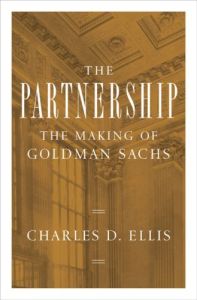Join getAbstract to access the summary!

Join getAbstract to access the summary!
Charles D. Ellis
The Partnership
The Making of Goldman Sachs
Penguin, 2008
What's inside?
A commitment to excellence was always Goldman Sachs’s wisest investment as it grew and prospered.
Recommendation
Every great company invariably encounters crises that can cripple its growth or propel it to greatness. Goldman Sachs, the biggest name in investment banking, has survived, though other titans, such as Bear Stearns, have fallen. However, Goldman Sachs became a traditional bank holding company amid 2008’s tumult on Wall Street and is no longer an investment bank. Charles D. Ellis, a strategic consultant to Goldman Sachs and other financial firms for more than 30 years, has written an exhaustive company history. He analyzes the firm’s numerous triumphs and notable missteps. He shines a spotlight on the powerful personalities who shaped the firm’s development over 140 years, including several men who went on to play major roles in the U.S. government. This detailed portrayal of pivotal individuals includes revealing anecdotes, and provides insight into the formation of Goldman Sachs’s unique culture and philosophy. At more than 700 pages, including extensive notes, the book requires a serious commitment, but getAbstract believes this absorbing history will reward you amply for your time.
Summary
About the Author
Charles D. Ellis, a longtime Goldman Sachs strategy consultant, is the author of 14 books.






















Comment on this summary